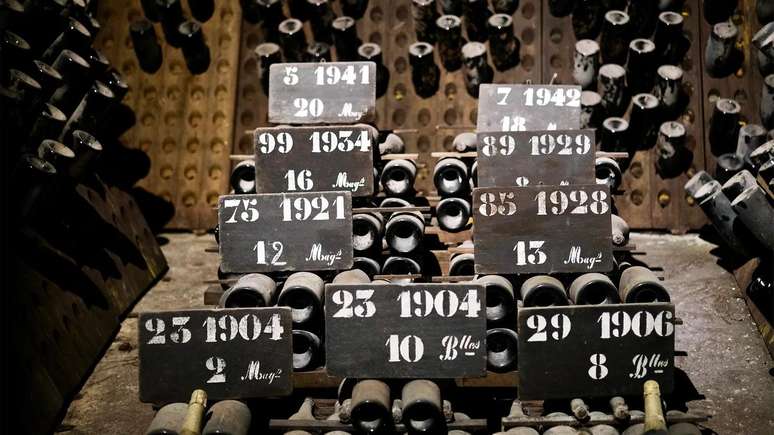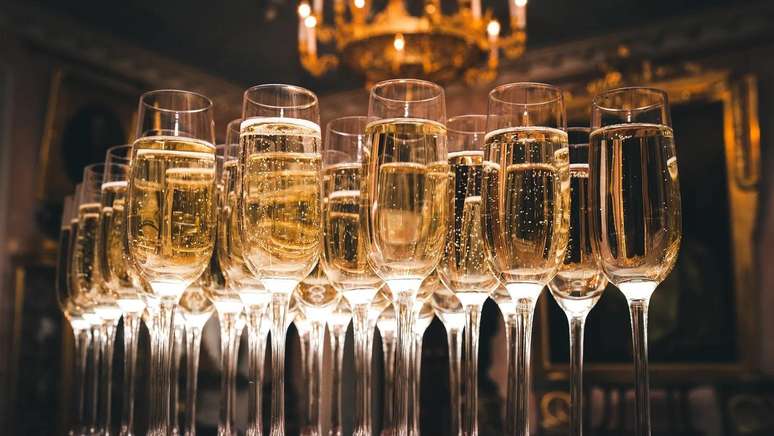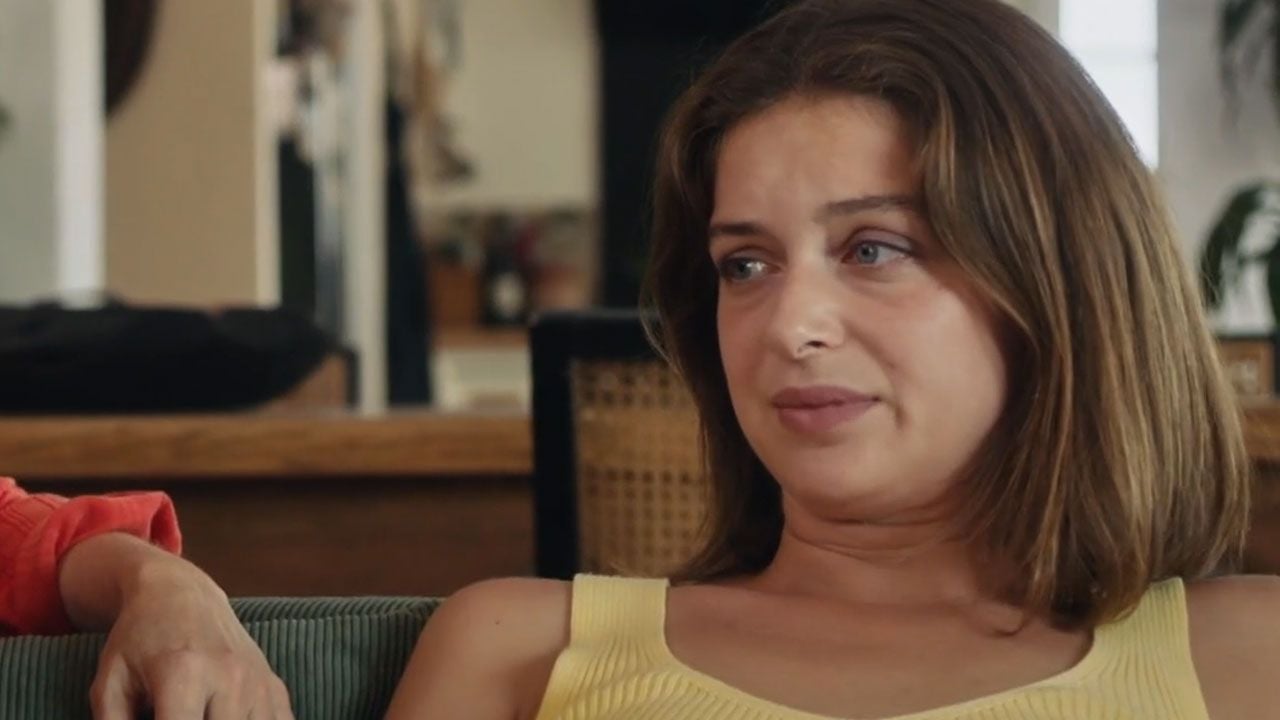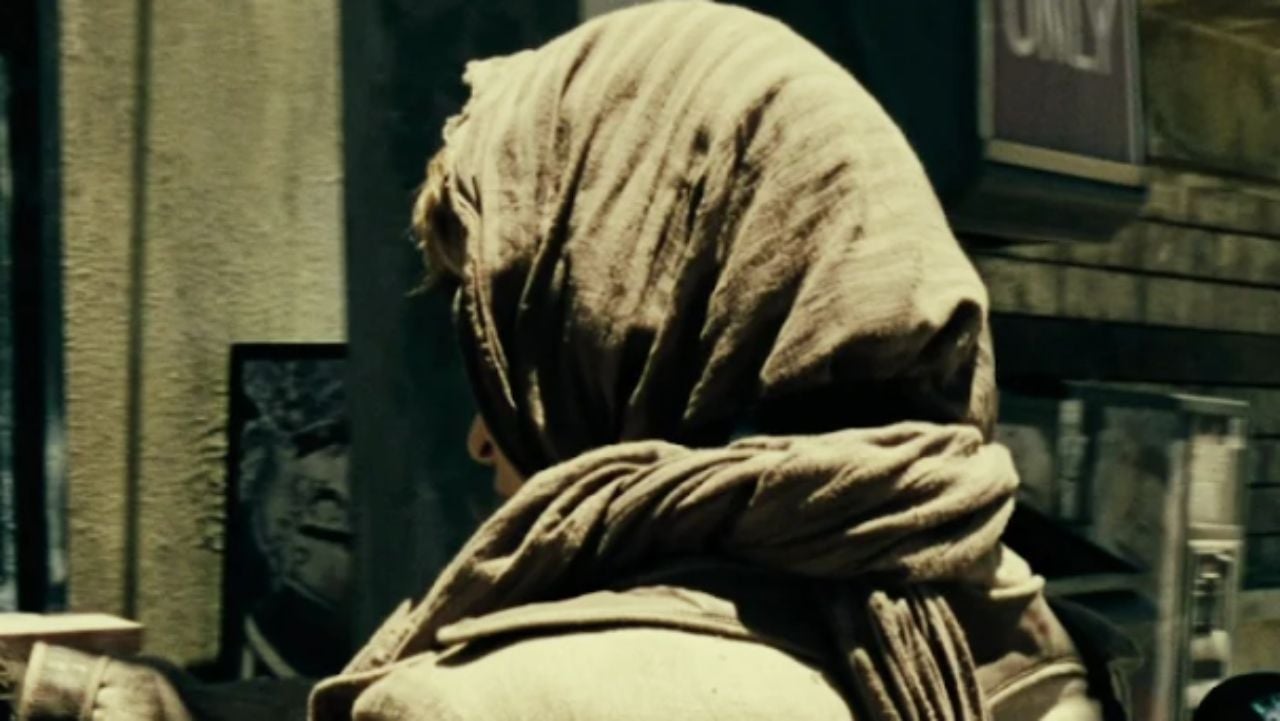They created some of the most famous beverage empires, taking advantage of a loophole in the rule that prevented women from opening businesses without the permission of their father or husband in 19th-century France.
On the outskirts of the city of Reims, in northeastern France, the subsoil hides a jewel.
20 meters below ground, millions of bottles of unlabelled champagne line the limestone cliff faces.
They are, in all, more than 200 km of cellars.
Some of these bottles are upside down, on chains, gleaming in the dim light. Others were piled up in small cellars protected by iron gates.
This is the zero point of the world champagne market. And, historically, widows reigned in the cellars.
Some of the greatest innovations in the champagne industry are due to the genius of these women.
In the 19th century, the Napoleonic Code prohibited women from opening businesses in France without the permission of their father or husband.
But widows don’t have to follow this rule.
This created an opening for women like Barbe-Nicole Clicquot-Ponsardin, Louise Pommery and Lily Bollinger, among others, to build their vineyards into empires.
They would eventually lay the foundations for the champagne industry, forever changing the way it was produced and marketed.
Barbe-Nicole Clicquot-Ponsardin — Russia and ‘remuage’
In 1798, Barbe-Nicole Ponsardin married François Clicquot, who at the time ran the family’s small textile and wine business, originally called Clicquot-Muiron et Fils, in Reims.
The business ended in financial disaster. When Clicquot died in 1805, he was widowed at the age of 27 and Ponsardin made the unconventional decision to take over the company.

“It was a very unusual decision for a woman of her class,” says Tilar Mazzeo, cultural historian and author of The Widow Clicquot (“The Widow Clicquot”, in free translation).
“It would have been extremely unusual for her to have a business, because she didn’t have to… She could have spent her life in salons and as a high society hostess,” adds Mazzeo.
Desperately in need of money to pay for her company, she asked her father-in-law for the equivalent, in current values, of around 835,000 euros (roughly R$4.5 million).
“Surprisingly, his father-in-law said ‘yes,'” says Mazzeo.
“I think that says a lot about how he saw potential in her, as she was a woman with no work experience.”
From the beginning, Barbe-Nicole has used her position as a widow as a marketing tool, with positive results.
The champagne house was renamed Veuve Clicquot-Ponsardin – “veuve” means “widow” in French.
“The word ‘veuve’ indicated a kind of respectability of the drink… Some of these drinks became associated with the debauchery and wild parties of the ancient royal court,” explains Kolleen M. Guy, author of When Champagne Became French: Wine and the Making of a National Identity (“When Champagne Became French: Wine and the Making of a National Identity”, in free translation) and Chairman of the Division of Arts and Humanities at Duke Kunshan University in Jiangsu, China.
The “veuve” branding on a bottle brought credibility, and other champagne producers soon followed suit, such as Veuve Binet and Veuve Loche.
“Companies that didn’t have a widow running the business started creating some kind of alternative brand, with ‘veuve’ in the name, to try to capitalize on the trend,” Guy says.
Barbe-Nicole took a four-year course with a local winemaker to boost his business, but by the early 19th century, he was once again on the verge of bankruptcy.
He got another 835,000 euros from his father-in-law to get the company back on track. But this would not have been easy during the Napoleonic wars in continental Europe, as closed borders made it difficult for goods to move.
By 1814, Barbe-Nicole knew her options were running out. Threatened with bankruptcy, she turned to a new market: Russia.
Russia’s borders would still be closed until the end of the Napoleonic Wars, but he decided to break the blockade.
“She made this big bet, knowing that if she could get her product to Russia before her arch-rival Jean-Remy Moët, she would be able to secure a market share,” explains Mazzeo.
“Otherwise, when the border was legally opened, Moët’s champagne would have arrived, and he would have continued to be the main supplier to the all-important Russian market.”
Barbe-Nicole smuggled thousands of bottles across the border. The stakes were high. It was the end of the season and the heat could spoil the champagne. And if she were caught, the bottles would be confiscated, further increasing the risk of her financial ruin.
But, fortunately, the champagne arrived in perfect condition and conquered the Russian market.
“In 90 days it went from an unknown supplier [na Rússia] be the ‘almighty widow,'” says Mazzeo.
As demand grew, the need arose to rapidly scale up production.
The process of removing dead yeast lees from the bottoms of bottles is a necessary step in the production of champagne, after aging and fermentation.
But this is monotonous work and detrimental to the quality of the drink.
Barbe-Nicole then had a better idea.
“Basically, he told his producers, ‘Take my table from the kitchen to the cellar, I want you to punch holes and turn them over. [garrafas] upside down’.”
“Do you agree that would be a better way to remove the lees? The yeast would settle in the neck of the bottle and we could remove it under pressure, which would be faster, wouldn’t it?” he allegedly said, according to Mazzeo.
“Everyone said ‘no, no, no, we can’t do it like this,'” but eventually resigned.
And it worked.
Known by the French term “remuage”, this technique is still a fundamental part of the Champagne production process today.

Louise Pommery – ‘brut’ champagne for the British
The second widow to revolutionize the champagne industry was Louise Pommery. She was born in 1819 and entered the drinking scene towards the end of Clicquot’s life.
When Louise was young, her mother sent her to England to study, an unusual decision that would benefit her throughout her life.
“She didn’t just learn to sew,” says Louise Pommery’s great-grandson, Prince Alain de Polignac.
“[Sua mãe] he gave her an education, which was unusual for a middle-class girl at that time.”
After completing her studies, she married Alexandre Pommery. In 1856, she teamed up with a partner, Narcisse Greno, to expand her existing champagne house.
Pommery and Greno is born.
Alexandre Pommery died in 1858. And for Louise, the next step was clear.
Eight days after her husband’s death, she took over the business.
“Fate brought her, and Madame Pommery was ready,” says de Polignac. “She had a 15-year-old son and a baby in her arms and instead of going back to her mother’s house, she decided to take over [a casa de champanhe].”
Clicquot may have conquered Russia, but Pommery was determined to dominate the English market.
Champagne of that era was very sweet. Some bottles contained up to 300 grams of residual sugar, much more than the current 12 grams or so.
The drink was served with ice, almost in the form of a granita.
Therefore, the British did not appreciate it.
But Pommery believed he could produce a champagne more suited to their tastes.
Thus it was that his champagne “brut” (brut) hit the market in 1874. The style was decidedly dry, fresh and intense. His balance was perfect, with a cheerful and delicate but firm palate.
“The idea was to produce a much finer wine, with a much more subtle preparation, for much longer in the cellar…” explains de Polignac.
“It exploded into the UK market because that’s what they’ve been waiting for.”
Tourism in the French region of Champagne was also born thanks to the vision of widows.
Most champagne producers built their castles after achieving commercial success.
But Pommery did the opposite: he built his castle first, precisely to attract more customers.
Lily Bollinger – Conquering America
In the mid-20th century, Lily Bollinger (1899-1977) entered the scene. She took over the Bollinger champagne house in 1941 upon the death of her husband and brand owner, Jacques Bollinger.
At the time, women’s rights to control businesses were still limited.
Only in 1965 would women gain full employment, banking and asset management rights without the permission of men. But the widows still managed to evade the application.
“He decided to take responsibility: he could have sold the company,” explains his great-grandson, Etienne Bizot.
Bollinger brought his champagne to the United States. She spent three months traveling alone across the country showing her wines.
Bollinger’s official background states that she achieved such popularity that she was named “First Lady of France” by the Chicago American newspaper in 1961.
A few years later, Bollinger released vintage RD (“recently disgorged,” meaning that the yeast lees had recently been removed) champagne.
He innovated the production technique, refining the bottle with the lees, dead yeasts and skins for long periods and manually removing the sediment from the bottle.
This champagne is one of the brand’s most coveted products to date.
“I think the unusual thing about widows is that they [não] get married again,” Guy says.
For him, «in a certain sense, I think they didn’t get married because, if they got married again, they would have to hand over part of the business to their husbands… They would lose their legal personality and, in a certain sense, it was a way to maintain their independence.”
The independence and creativity of these three widows paved the way for future generations of women. Her innovations have been immortalized in glass bottles.
“This group of women was truly groundbreaking – they paved the way at key moments [da produção de champanhe] and that importance is still represented,” says Mélanie Tarlant, of the twelfth generation of winemakers and member of the La Transmission, Femmes en Champagne association, led by women champagne producers.
Tarlant produces non-dosé (low sugar) champagne. He points out that Pommery pioneered the techniques he still uses today.
“It may have been lost to time,” Tarlant concludes.
read the full version of this report (in English) on the website BBC Travels.
Source: Terra
Rose James is a Gossipify movie and series reviewer known for her in-depth analysis and unique perspective on the latest releases. With a background in film studies, she provides engaging and informative reviews, and keeps readers up to date with industry trends and emerging talents.







